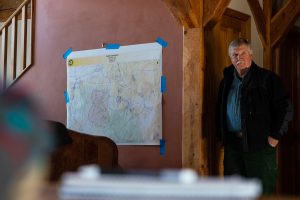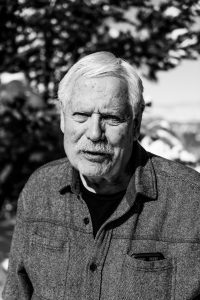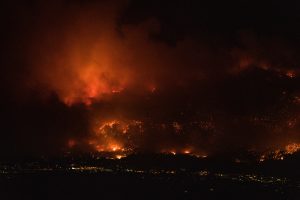By Whitton Feer – Salida, Colorado
The smoke was thickening, illuminated by amber truck headlights. Neighbors packed their belongings before speeding down the road. Homeowners scrambled, passports thrown into boxes, musical instruments shoved through car doors in haste. The sirens blared constantly, as first responders struggled to maintain some order through an event fraught with uncertainty.
This scene is growing more familiar each year, as wildfires exacerbated by climate change put more communities at risk.
9 out of 10 of the most economically destructive wildfires in the US have occurred after 2003, according to a study conducted by the US Bureau of Economic Analysis and the Insurance Information Institute.
The increased size and frequency of these fires is a direct product of climate change, said Steve Runnel, a wildfire expert who received the Nobel Peace Prize for his work on the Intergovernmental Panel on Climate Change.
Simply put, the fires experienced in the Western US are a product of excess fuel, rising temperatures and dryer winters, all which can be attributed to climate change, said Runnel.
This fall, residents of Salida, CO were forced to confront a wildfire in their backyard. The Decker fire was sparked by lightning and burned in the wilderness for weeks, before making a run on Salida. It forced residents out of their homes and sparked chaos in the community.

Terry Krasko, staff officer at USDA Forrest Service, presenting about the Decker fire
At 4:00am on October 2nd 2019, Jerry Mallett, a conservationist and Salida resident was woken by police. At 4:30am, he drove toward town, his red Saab 900 Turbo loaded with clothes, a passport and a tiny white dog named Bear.
“Fires gonna be a part of our lifestyle,” said Mallet.

Jerry Mallett lives in a house near the Decker fire. He was evacuated for about a week.
He said he knew a fire was coming for years, and that the risk of living on the shoulder of Methodist Mountain was worth his exposure to fire. The region surrounding Mallet’s home is ranked as a red area by the US Forest Service, meaning it is a zone vulnerable to wildfires. “We know we’re in a hot area,” Mallett said
Even with this knowledge, Mallett and his neighbors chose to build here for a reason.
“I just like the view,” said Mallett. He can see 5 14,000 foot peaks from his deck. The view makes the risk worth it. It makes him happy, he said.
Mallet prioritizes living in the mountains over immunity from fire. This choice is fairly common, said Tom Kinney, a Helitack crew leader for the US Forest Service. Residents choose to fortify their homes and remove fuel on their properities, but they are rarely concerned enough to move, said Kinney.
“It’s not if, it’s when,” said Mallett, who has accepted fire as a part of his life. “We live with that every day.” He doesn’t see fire as a reason to move, even though he said he is well aware that the changing climate will increase the severity of wildfires.
Part of this optimism comes from a faith in first responders. If it were to ever happen again, “they would save my butt,” said Jerry. This faith in first responders can be dangerous, Kinney said. His first responsibility is to protect people, not property.
As climate change increases the size and severity of wildifires, basic survival will become a major concern for the growing population of people who decide to live in rural areas.
The events and emotions experienced by Mallett and many others will become the norm. The frantic gathering of belongings under a cloud of smoke, orange glow and sirens will haunt those who choose to live in the arid west.

The 2018 Lake Christine fire approaches El Jebel Colorado
